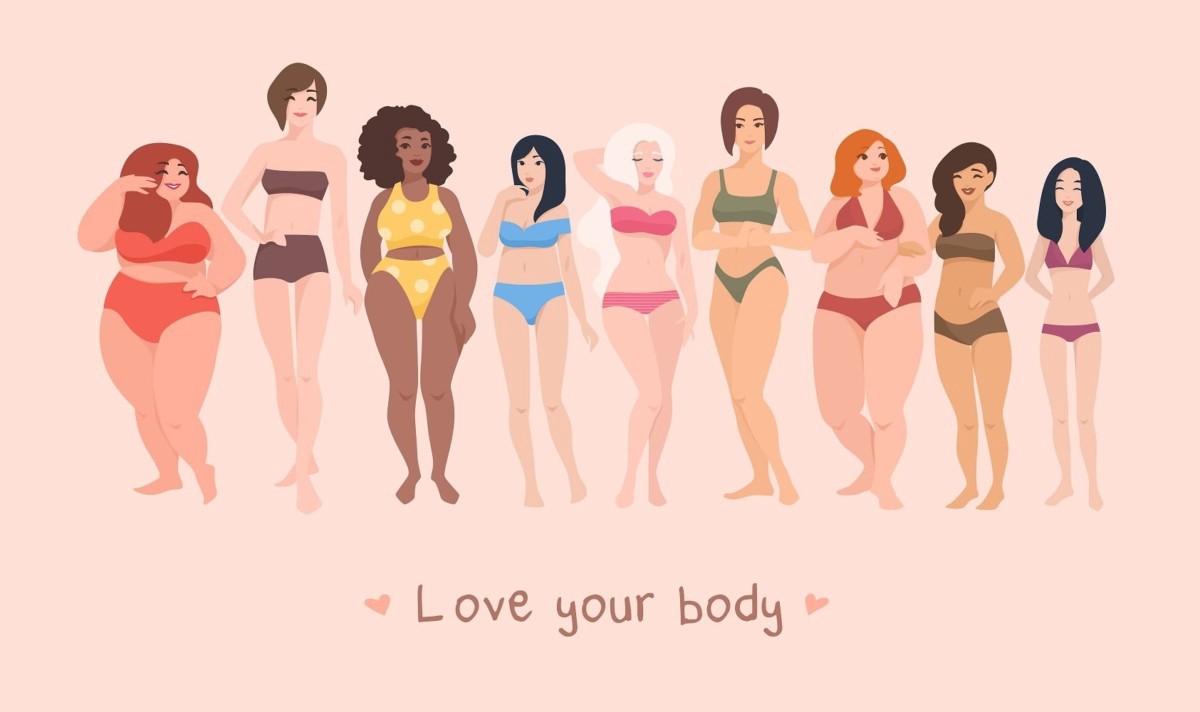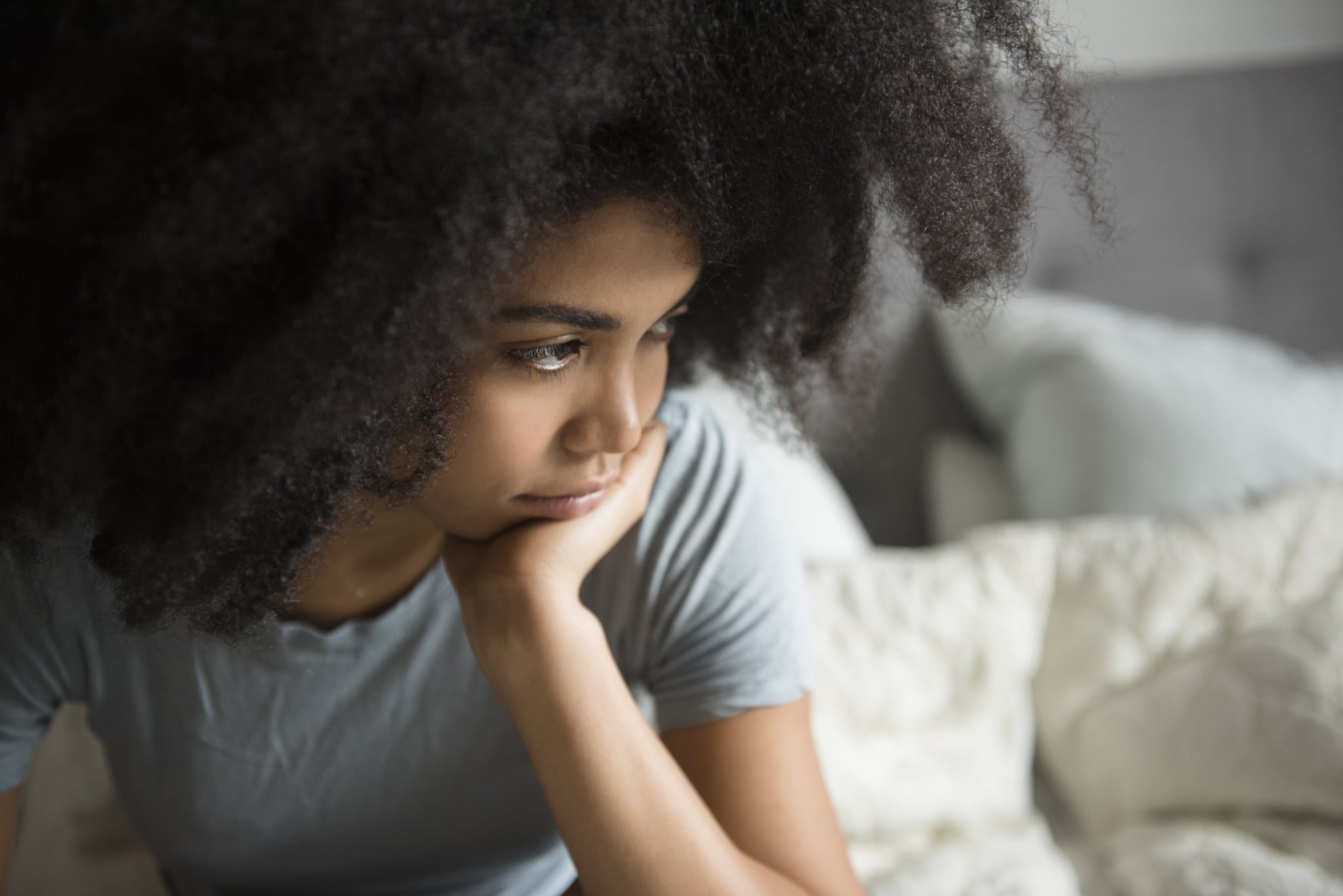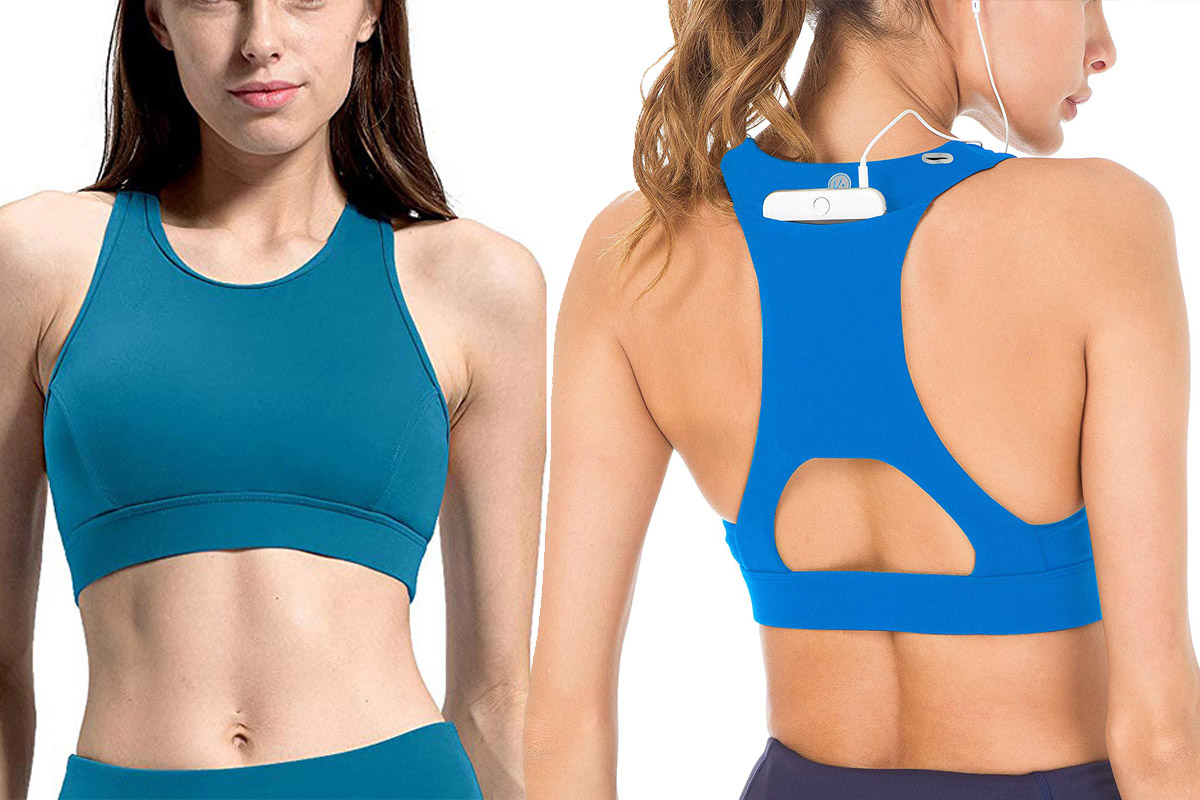People used to believe a lot of things that now seem completely bizarre to us,…

Amazing Facts You Never Knew About Your Breasts
If you’re like most women, you know your breasts pretty intimately—exactly how they fit into your bras, the way they look in a certain dress, and what they feel like at different times of the month. But we bet there are a lot of things you don’t know about your bosom buddies, and how this information relates to your health. Behold 19 surprising and amazing facts and figures, and some smart advice from experts.
Your breasts can be different sizes
“Something that a lot of people are uncomfortable about is asymmetry,” New York–based physician Jennifer Wider, MD, author of Got Teens? The Doctor Moms’ Guide to Sexuality, Social Media and Other Adolescent Realities, tells Health. “But the truth is that about 50% of women have uneven breasts—and usually, for reasons we don’t really know, it’s the left side that’s a little bigger.”
This size difference echoes a similar pattern found in men: About half of guys have asymmetrical testicle, and the left testicle tends to be the larger one. “Our bodies in general are never perfectly symmetrical,” says Dr. Wider, “so it’s usually nothing to worry about.”
Breasts can be different shapes, too
Some breasts sit high on the chest while others hang low, and some have pointy nipples while other nipples are smoother and less prominent. “As more people are looking at social media or looking at pornography, they may get an idea of what breasts are ‘supposed to’ look like,” says Dr. Wider. “We need to throw that idea out the window, because there is no right size or shape.”
Of course, if a breast or a nipple suddenly begins to grow or change shape in an unusual way, it should be evaluated by a physician, Dr. Wider adds. “If it’s always been that way, we’re less worried about it,” she says. “But if you’ve noticed something new, we want to take a look.”
Most breast lumps are not cancerous
“One of the most common misconceptions is that every breast lump is cancer,” Deanna Attai, MD, a breast surgeon and assistant clinical professor at the David Geffen School of Medicine at UCLA, tells Health. “Women will feel some sort of lump or thickening in their breast and immediately think the worst.”
Breast lumps are extremely common and are not likely to be cancer, especially in young women. “All sorts of things can grow in the breasts, like cysts or benign tumors,” says Dr. Attai. Breast tissue also changes as hormone levels fluctuate, and they can feel lumpier than usual before you get your period every month.
“Anyone who does feel something different should mention it to their doctor, just to be safe,” says Dr. Attai. “But those people should also not freak out right away before they have more information.”
Breast pain can be a mystery
Breast pain is an extremely common complaint. “Many women who come in think there’s something wrong because none of their friends have pain like this,” says Dr. Attai. “But I think a lot more women do have it and just aren’t talking about it.”
Breast pain is often related to hormonal fluctuations and tends to be worst right before and during a woman’s menstrual period. “But some women will have pain not related to their cycle, and it can be very frustrating because often we don’t find any particular cause.”
If a woman’s breast pain or tenderness is causing distress or disrupting her daily life, she should talk with her doctor. “We’ll do a workup, including an ultrasound, and get a sense of whether there are any medications or other factors that might be influencing the pain,” says Dr. Attai. “But the good news is that the majority of breast pain is not related to cancer.”
Breasts are getting bigger
According to a 2013 unscientific study by the lingerie retailer Intimacy, American breasts have upsized over the years. The brand interviewed more than 60,000 customers and compared the findings to a similar survey done in 1992. Turns out that the average bra size had increased from 34B to 34DD.
America’s obesity epidemic likely plays a role in the change, as does the increase in the number of women opting for breast implants. But a spokesperson for Intimacy also said that women have more bra options to choose from than they used to, and that more are shopping for appropriately sized bras.
It’s not just American breasts that are growing, either: A similar U.K. study in 2015 found that Britain’s average bra size surged to 36DD, up from 36C the year before. Interestingly, that survey also found that women born in the first three months of the year tended to have the largest breasts.
But breast reductions are also on the rise
Comedian Chelsea Handler joked about getting breast reduction surgery earlier this year after posting a bikini photo on social media. But if she’s actually considering the procedure, she’s certainly not alone. According to a recent report from the American Society of Plastic Surgeons, breast reductions saw an 11% spike in popularity between 2016 and 2017.
Breast reduction can be a smart choice for women who suffer from back and neck pain, rashes under their breasts, or painful bra-strap grooves related to the size and the weight of their breasts, doctors say. Surgery is often covered by insurance, and patients usually go home the same day, although it can take a few weeks to make a full recovery.
There’s a lot of confusion about screenings and self-exams
Medical advice for when women should start getting mammograms has changed over the years. But the most recent guidelines from the American Cancer Society state that women should have the choice to begin annual mammograms at age 40, and that all women should have annual mammograms starting at age 45. At age 55, women can switch to every-other-year mammograms if they’d like.
If a woman has a family history of breast cancer or other risk factors, she should speak to her doctor about possibly getting screened earlier. As for young women who detect a breast lump or something unusual, Dr. Attai says mammograms usually aren’t the best diagnostic option.
“These women will tell me their doctors told them they’re too young for breast cancer, and they weren’t given a mammogram,” says Dr. Attai. “But they probably should have gotten an ultrasound or another form of imaging. We should never assume a woman is too young, or discount her concerns.”
And while breast self-exams are no longer part of the American Cancer Society’s screening recommendations, many doctors still encourage their patients to do them—or at least suggest that women be familiar with how their breasts look and feel. “I recommend doing it monthly—not right before your period, because breasts can get bumpy and lumpy at that time of the month,” says Dr. Wider. “The best time to do it is 7 to 10 days after you stop menstruating.”
Dense breasts have higher cancer odds
Doctors have known for years that mammograms can be more difficult to read accurately if a woman has dense breasts—meaning they have higher amounts of glandular and fibrous tissue and lower levels of fatty, non-dense tissue. (Breast density isn’t related to breasts’ outward appearance or the way they feel.)
But a recent study published in Radiology also confirmed previous suspicions that dense breast tissue may be more likely to become cancerous. In the study of more than 100,000 women, the rates of breast cancer were 6.7 per 1,000 exams for women with dense breasts and 5.5 per 1,000 for those with non-dense breasts. Women with dense breasts also tended to have larger tumors, on average.
About half of American women have dense breast tissue, according to the study authors. Women’s breasts often become less dense as they age and after they go through menopause.
But large breasts are not at a higher risk
“Women with larger breasts are not more at risk for breast cancer than women who have very small breasts,” says Dr. Wider. In fact, she points out, men (who tend to have very little breast tissue) can get breast cancer, as well.
The risk factors for breast cancer include family history, alcohol consumption, and the age at which a woman gets her first period, says Dr. Attai, “but they do not include her breast size.” However, lack of exercise and obesity can also increase a woman’s risk for breast cancer, so if her breasts are larger simply because she is overweight or has recently packed on extra pounds, that could play a role.
New moms produce milk, even if they aren’t breastfeeding
During the second trimester, milk ducts form—which is why pregnant women’s breasts may occasionally leak. Milk production then ramps up once the baby is actually born. For the first few days following delivery, a new mom’s breasts produce a thick, nutrient-rich substance called colostrum. At day 3 or day 4 post-birth, mom will start producing actual milk.
“Your breasts will fill up with milk whether you choose to breastfeed or not,” says Dr. Wider. “If you don’t breastfeed, your breasts will adapt and stop producing milk soon after. And if you do, they’ll continue producing it for as long as there’s demand.”
Breasts change size after baby—but they usually bounce back
“Sometimes women complain that their breasts look different after they’ve had a baby, or that breastfeeding made their breasts deflated or hang lower,” says Dr. Wider. “I tell them that their breasts will probably bounce back to what they looked like before, but that it may take a few months.”
It is possible, however, for pregnancy to change a woman’s breasts on a more long-term basis. Some women develop stretch marks on their breasts that can be permanent. And some women say their breasts got bigger or smaller after having kids. (Because many women don’t lose the excess weight they gained during their pregnancy right away, that could be one reason breasts get larger and stay that way.
You can take a home test for breast-cancer genes
Women who want to know more about their family history and their genetic risk of breast cancer can now get answers with a simple mail-away saliva test in the privacy of their own home. “We used to need an elaborate and expensive blood test to find out these things,” says Dr. Wider.
If a genetic test like 23andme reveals that a woman has a BRCA genetic mutation that increases her risk of breast and ovarian cancer, she should talk with a genetic counselor and her doctor to decide on a course of action. She may opt for more frequent screenings or preventative surgery, for example.
But experts warn that a test for a BRCA mutation doesn’t tell the whole story—and that a negative test result doesn’t mean you won’t get breast cancer or can be lax about screenings and prevention strategies. Many other genes might also influence your risk, and adopting a healthy diet and lifestyle are still important ways to protect against breast and other cancers.
Weight loss can shrink your breasts
Aside from surgery, there’s not much women can do to change the size of their breasts, says Dr. Wider. One thing may make a difference, though. “Some women who start dieting and exercising to lose weight are surprised because one of the first places they lose it is in their breasts,” she explains.
This can be frustrating to women who would rather lose weight in their stomach or their face first, of course—but it can also be a welcome change for women who have been plagued by the pain and discomfort that can come with having large breasts. “If women complain about their large breasts, I tell them that one way to deal with that could be losing weight,” says Dr. Wider.
When it comes to increasing breast size, surgery is pretty much the only option proven to work. “You can change the position of where the breast sits by building up your pectoral muscles, and that can make them look perkier,” says Dr. Wider. “But it won’t change the actual size—and neither will any of those creams or pills or other gimmicks you see advertised to do so.”
Nipple discharge can be normal—or not
Don’t panic if you notice fluid coming from your nipple. “If the discharge is yellow-greenish, light brown, or tan in color, it could be related to normal hormonal fluctuations,” says Dr. Attai. (She recommends blotting the nipple with a white tissue to get a better sense of the color.) “Sometimes discharge can be very dark, almost like motor oil, but that could still be a normal part of what we call a fibrocystic change.”
Still, any unusual discharge that lasts longer than a few days should be examined by a doctor. And if the fluid is clear or bloody, “that’s a little more pressing and should be checked out by a physician right away,” says Dr. Attai. In most cases, the cause isn’t serious, she adds—but it can be dangerous if not treated in a timely manner.
Size does matter, for men and for women
There’s a stereotype that men are more attracted to women with larger breasts, and at least a couple of studies seem to back up that notion. One French study, published in Body Image in 2007, found that women were approached more often by men while sitting in a bar or nightclub when they wore padded bras that made their boobs appear larger.
Another 2013 study published in Sex Roles used eye-tracking software to follow men’s gazes. Researchers found that men were more likely to check out women with larger breasts and hour-glass figures, compared to those with small breasts.
And it turns out, men and women may not feel that differently about breast size, after all. In a 2017 unscientific survey that asked 1,000 Americans and 1,000 Europeans their ideal cup size, C was the most popular answer for both genders—chosen by 48.5% of men and 52.3% of women. About 26% of men and just 18% of women preferred breasts larger than a C-cup, while about 23% of men and 28% of women liked smaller sizes best.
Itching and inflammation should be checked out by a doctor
Itchy or irritated nipples are very common. Dry skin are sweat are common culprits, as is rubbing during exercise and exposure to chemical irritants (in a new laundry detergent, for example).
Unfortunately, these symptoms can also be a sign of breast disease, or cancer. “The majority of women who come see me with a rash or a red spot on their breasts have already Googled inflammatory breast cancer,” says Dr. Attai. “We do a biopsy and it’s usually something else—but it’s always better to be safe than sorry.”
Mastitis, an infection of the breast tissue that can be caused by a blocked milk duct, a nipple piercing, or a crack in the skin, can also cause inflammation and irritation. The infection usually goes away with antibiotics, says Dr. Attai—but if your symptoms don’t respond to treatment, see a breast cancer specialist to rule out cancer.
Breasts need moisturizing
Dr. Attai doesn’t recommend expensive skin-care products marketed specifically for “firming” or “enhancing” the breasts. “Besides being a little more sensitive around the nipples, the skin on your breasts is no different from the skin on the rest of your body,” she says.
“I generally recommend using regular soap or body wash on your breasts, and to avoid going overboard with harsh chemicals that can cause irritation and dryness,” she says. She also recommends using a gentle moisturizer, just like on the rest of your body. “A lot of times when women complain about dry, cracked nipples, it can be related to dry skin,” she says. “I have so many patients who think to put lotion on other parts of their body, but they never think about putting it on their breasts.”
There’s no “best” bra
“I get asked a lot, as a doctor, what’s the best bra,” says Dr. Attai. “I wish there was one, but what I tell people is that the best bra for you is one that’s reasonably comfortable and gives you some support. That doesn’t mean you don’t still want to take it off at the end of the day, but you shouldn’t spend the day tugging or readjusting or being in pain, either.”
Dr. Attai adds that there’s no evidence to support the often-cited theory that underwire bras cause breast cancer. While we’re at it, there’s also no proof that wearing a bra can prevent breast sagging later in life. (In fact, a 2013 French study even suggested that wearing a bra might encourage sagging by weakening connective tissue.) What it can do, however, is offer support while you’re wearing it.
The bra industry claims that 80% of women wear the wrong size bra, and surveys show that many women have never been properly fitted for one. Taking the time to get fitted probably isn’t a bad idea, says Dr. Attai. “Our breasts change as we age and go through life,” she says, “so chances are the bra size you wore in college may not still be the best bra size for you in your 30s or 40s.”
Sports bras aren’t just for comfort—they can improve performance
The right sports bra can keep your girls from bouncing during high-intensity exercise; some research suggests that breasts can move a vertical distance of up to 8 inches during a hard workout. And as most active women realize, breast pain during and after exercise is a common complaint.
Finding a supportive sports bra (and avoiding common sports-bra mistakes) can help—and not just for comfort, either. A small 2015 study published in Human Movement Science found that when women ran on a treadmill wearing high-support bras, their running mechanics were more efficient than when they wore low-support bras.





